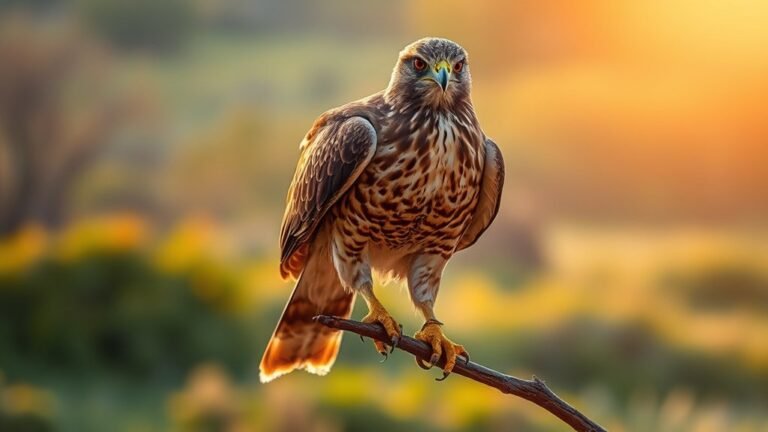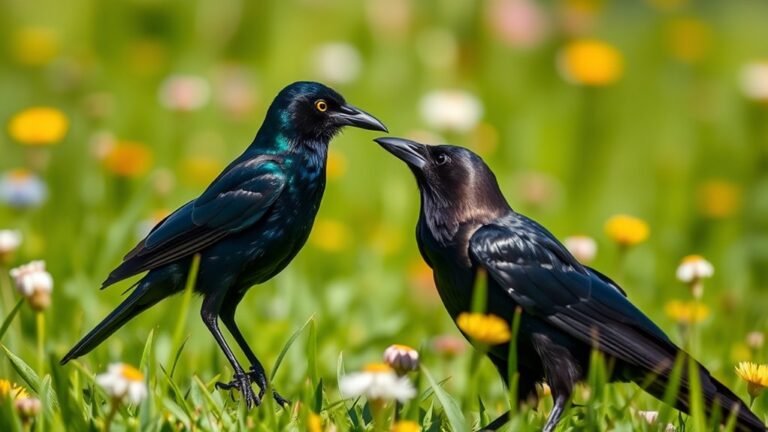Baby Starlings: Facts and Characteristics
When you see baby starlings, you can tell they are small and need help from their parents. They rely on mom and dad for warmth and food. You can watch them grow quickly. Every day, they gain weight and their feathers start to show. This fast growth helps them survive in their surroundings.
Baby starlings have specific feeding habits. They eat insects and soft fruits. Their parents bring food to them repeatedly throughout the day. Starlings are also social birds. They like to be around their siblings and learn from each other.
Several things help baby starlings thrive in different places. They adapt well to urban and rural areas. Their ability to learn from their environment also helps them find food and avoid danger. Overall, understanding baby starlings gives us a glimpse into their lives and how they succeed in nature.
A Quick Overview
Baby starlings, also called nestlings, start out very small and weak. They have very few feathers. These little birds need their parents to keep them warm and to feed them.
They grow fast! In just one week, they can double their weight. When they are hungry, they make chirping sounds to let their parents know.
As they grow, their soft down feathers turn into shiny, patterned feathers. These new feathers help them blend in with their surroundings.
Baby starlings eat mostly insects. They watch older starlings to learn how to catch food. They also like to eat together in groups.
Starlings are social birds. They often fly in large groups. This helps keep them safe, and they learn to work together. They even have a pecking order that helps them get along.
Overview of Baby Starlings

Baby starlings, also called nestlings, are really interesting birds. When they hatch, they need a lot of help from their parents. The nestlings rely on their mom and dad for warmth, food, and safety.
At first, they've very few feathers. This makes them look a bit funny and quite vulnerable. But in just a few days, they grow more feathers. These feathers help keep them warm and will help them fly later on. You can actually see them grow quickly; they can double their weight in just one week!
As they grow, they start to make more sounds. These sounds usually mean they're hungry. By chirping, they let their parents know they need food. This shouting helps them connect with their parents and strengthens their bond.
Unique Physical Features

As baby starlings grow, they show some really cool physical features. One of the first things you notice is their feathers. At first, they've soft, fuzzy down. But as they get older, their feathers change and show pretty patterns. Sometimes, these feathers even shine with different colors. This shiny look helps them blend in with their surroundings.
Their eyes also change color as they grow up. They start out darker but become lighter over time. This change shows how they're maturing. The different feather patterns and eye colors are important for their survival. They help baby starlings make friends and find mates later on.
Watching these changes in baby starlings can help you understand their journey better. It's exciting to see how they develop and adapt!
Feeding Habits and Dietary Needs

When baby starlings start growing their cool features, what they eat really matters. These birds mainly eat insects, which help them grow strong.
As they learn to find food, they show some interesting ways to do it. Here are three behaviors to watch for:
- Ground Searching: Baby starlings like to dig around in the dirt. They look for insects and tiny bugs hiding under leaves.
- Feeding Together: They often hunt for food in groups. This helps them find more food because they share tips on where to look.
- Watching Older Starlings: Young starlings learn a lot by watching the bigger birds. They copy how the adults find and catch food, which helps them get better at it.
Knowing about these feeding habits can help you appreciate how these birds grow and survive.
Development Stages of Baby Starlings
Baby starlings go through important stages as they grow. First, when they hatch, they're tiny and need a lot of care from their parents. For the first week, the parent starlings feed them often, helping them grow strong.
As the babies grow, they start to develop feathers. This is an exciting time because they can start to flap their wings and hop around in the nest.
After a while, with a little encouragement from their parents, the young starlings feel brave enough to leave the nest. This is when they begin to explore the outside world.
Each stage of their growth is crucial for them to survive and thrive in nature. Watching these changes helps us understand how important parental care is for their development.
Social Behavior and Interactions
Starlings aren't alone. They like to be with friends, and they behave in ways that help them survive. These social behaviors help them find food and create a sense of community.
- Flocking Together: Starlings form big groups. This keeps them safe from danger and makes it easier to find food.
- Talking to Each Other: Starlings have ways to communicate. They use sounds and body movements to share news about food and warn each other about predators.
- Finding Their Place: In a flock, starlings have a pecking order. This means some birds lead while others follow. This order helps them work together when they look for food.
These friendly interactions help starlings stick together.
This teamwork also makes them better at adjusting to new places and changes in their surroundings. Social connections are important for starlings!
Nesting and Parental Care
When starlings get ready to raise their babies, they show amazing skills in building nests. They choose safe spots like tree holes or the edges of buildings to make their homes.
Starlings gather all kinds of materials for their nests. They use grass, feathers, and even bits of trash they find. This shows how clever they're at using what's around them.
After the eggs hatch, both mom and dad starling work hard to feed their chicks. They bring back bugs and fruit to help their baby birds grow strong.
Adaptations for Survival
Starlings have some clever ways to help them stay safe and live in different places. These skills help them do well in cities and in the countryside.
- Blending In: Young starlings have brown and gray spots on their feathers. This coloring helps them hide from animals that want to eat them.
- Flying Fast: Starlings have strong wings and light bodies. This helps them fly quickly and move around easily. They can escape danger and find food without too much trouble.
- Staying Together: Starlings like to fly in big groups. This makes it hard for predators to catch just one bird. More birds mean more safety!
These tricks help starlings live well in many different places. They're interesting birds to learn about!
Importance in Ecosystems
Baby starlings are important for nature. They help keep insect numbers down, which is good for farming and plants. When baby starlings eat bugs, they make sure those pests don't take over gardens and fields.
These young birds also help plants grow. As they search for food, they spread seeds all around. This helps new plants come up in different places. More plants mean a healthier environment. Many animals rely on different plants for food and shelter.
When you care for baby starlings, you're helping the entire ecosystem. You're part of a big group of people who love nature and want to protect it.
Sharing this knowledge helps everyone appreciate how important these birds are. Let's all work together to keep our world balanced and thriving!
Frequently Asked Questions
How Do Baby Starlings Communicate With Each Other?
Baby starlings talk to each other using soft chirps. These sounds help them share their needs while they are in the nest. When they chirp, they let their parents know they are hungry or need help. The parents reply with calls that guide the babies. This helps the babies find food and stay safe as they grow up. Baby starlings use these simple sounds to communicate and bond with their family.
What Predators Pose Threats to Baby Starlings?
Baby starlings face big dangers in their nests. Common threats come from cats and birds of prey. These predators can harm the young birds. To stay safe, baby starlings use smart tricks. They often hide well to blend into their surroundings. They also stay close together to help protect each other. These simple actions can help them survive in the wild.
Do Baby Starlings Migrate With Their Parents?
Yes, baby starlings migrate with their parents. They follow their parents to learn where to go and when. This journey helps them get used to new places and builds a strong bond between them. Together, they find food and shelter in different seasons.
Are Baby Starlings Capable of Complex Vocalizations?
Yes, baby starlings can make complex sounds by mimicking other birds. This helps them learn and connect with others in their flock. As they listen and copy the sounds around them, they create their own unique songs. These songs help them fit in and show their place in the group.
What Is the Lifespan of a Baby Starling?
A baby starling usually lives about three years in the wild. This can change based on how well it is cared for when it's young. Good food and protection help baby starlings survive better. If they are well taken care of, they can live longer and stay healthier. It's amazing to watch these special birds grow and thrive!

Luna is the passionate founder and author of Birds and You, a website dedicated to sharing her love for birds with fellow enthusiasts. Through her engaging articles and guides, she aims to educate and inspire others to explore the fascinating world of birds. When she’s not writing, you can find Luna observing birds in their natural habitats or sharing beautiful bird photography on Pinterest. Join her on this journey to celebrate and protect our feathered friends!







